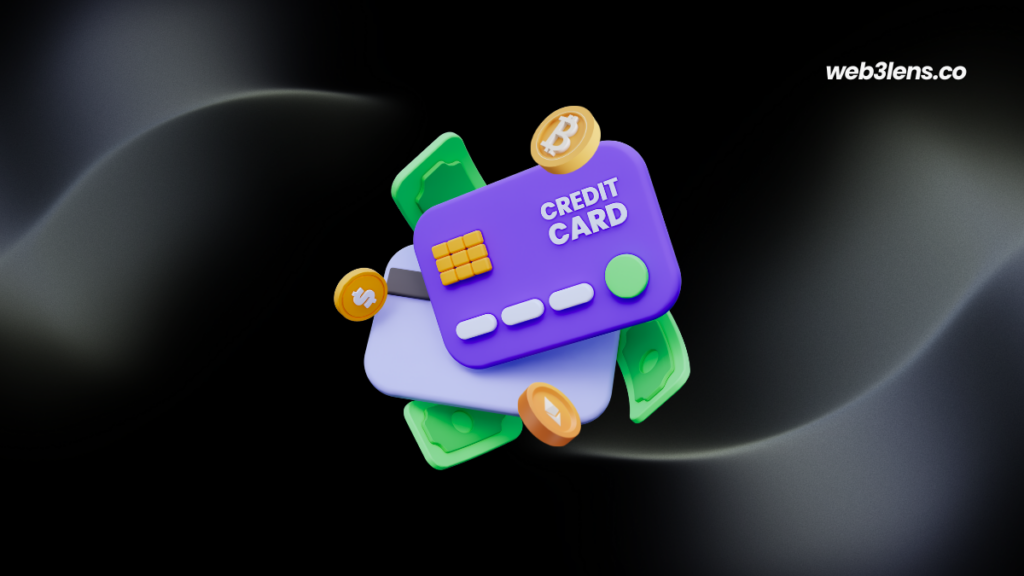
Remember when using different blockchains felt like trying to travel between countries without a passport, a visa, or even a map? Confusing, inefficient and downright frustrating. That’s exactly the problem Zeus Network is stepping in to solve, and they’re not just patching the cracks, they’re rebuilding the entire road.
With a bridge connecting Bitcoin and Solana, Zeus Network is transforming the way we think about blockchain interoperability, making cross-chain interactions as smooth as tapping your boarding pass at the gate. Say goodbye to barriers and hello to a world where your assets move freely, faster and smarter.
The Vision: Solana as a Universal Layer 2
Picture this: you’ve got Bitcoin, the original cryptocurrency with its massive $1.2 trillion market cap, and Solana, the high-speed blockchain that developers love. They’re like two incredibly powerful tools that couldn’t quite work together – until now. Zeus Network looked at this situation and asked, “What if we could combine Bitcoin’s security and trust with Solana’s speed and flexibility?”
The team’s solution is brilliant in its simplicity: use Solana’s unique monolithic architecture as a foundation. Unlike other blockchains that separate different functions, Solana combines execution, data availability, and consensus into one smooth-running machine. It makes it the perfect candidate to serve as a Layer 2 platform for other blockchains.
What makes this vision particularly exciting is the timing. With Bitcoin’s ecosystem expanding through innovations like Ordinals and Runes, which generated over $135 million in fees in their first week alone, the need for scalable, efficient solutions has never been greater. The market is ready for a solution that can handle this growing demand while maintaining the security and decentralization that makes blockchain technology so powerful.

Understanding ZPL: The Bridge Builder
The Zeus Program Library is where the magic happens. Think of it as a universal translator for blockchains, but with some serious technical muscle behind it. Built on the Solana Virtual Machine, ZPL is a complete reimagining of how cross-chain communication should work.
At its core, ZPL offers a pluggable architecture that allows developers to seamlessly integrate cross-chain functionality into their applications. This is about token transfers but mostly about creating a foundation for complex cross-chain applications. The system includes pre-built interfaces for common operations while maintaining the flexibility to handle custom implementations.
The programmable framework takes things a step further, implementing advanced state management across multiple chains. This includes atomic transaction processing with rollback capabilities, ensuring that cross-chain operations either complete fully or don’t happen at all. Multi-signature security protocols and real-time verification systems work in concert to maintain the integrity of every transaction.
Perhaps most importantly, ZPL achieves interoperability through standardized message passing between chains. This means consistent state synchronization and automated reconciliation mechanisms that keep everything running smoothly, even when dealing with chains that have very different underlying architectures.
ZPL-Assets: Transforming How Value Moves Across Chains
ZPL-Assets represent the practical implementation of these powerful ideas. These digital assets can easily move between blockchains while maintaining their core properties, and they come in both fungible and non-fungible varieties.
For fungible tokens, the system implements real-time price feeds and automated liquidity management to ensure smooth operations. Multi-chain collateral support enables complex financial applications, while gasless transaction capabilities and atomic swap functionality make the user experience seamless.
Non-fungible tokens receive special attention in the ZPL system. Metadata preservation across chains ensures that NFTs maintain their properties and history as they move between networks. The system handles provenance tracking and royalty enforcement across marketplaces, while also enabling advanced features like cross-chain rental and fractionalization.
All ZPL-Assets benefit from important technical guarantees. Continuous state verification through the Zeus Layer ensures security, with multi-node consensus requirements and cryptographic proof generation providing multiple layers of protection. The system can detect anomalies in real-time and respond through automated security checkpoints.

The Bitcoin-Solana Bridge: The Implementation Explained
The Bitcoin-Solana bridge represents Zeus Network’s flagship implementation, showcasing the full potential of the ZPL system. The implementation begins with zBTC, which uses a sophisticated two-way pegging mechanism to achieve instant finality. Multi-signature security protocols and automated vault management ensure the safety of funds, while real-time Bitcoin network monitoring keeps everything synchronized.
For Runes, the zRuneX implementation addresses the scalability challenges that have emerged as the protocol gains popularity. The system achieves low-latency confirmation times through optimized transaction processing and advanced mempool management, all while maintaining the core properties that make Runes valuable.
The zOrdX system brings similar benefits to Ordinals, preserving inscriptions while enabling them to take advantage of Solana’s efficient NFT marketplace infrastructure. The implementation includes comprehensive marketplace integration APIs and batch transfer optimization to handle the unique requirements of Ordinals.

Technical Infrastructure Recap
Zeus Network’s architecture splits into on-chain and off-chain components, each playing a crucial role in the system’s operation. The on-chain component, ZPL, includes core programs for asset management, bridge protocols, and state management, along with a comprehensive client SDK that supports multiple programming languages and platforms.
The off-chain component, Zeus Layer, consists of a distributed network of nodes that handle the heavy lifting of cross-chain communication. This includes peer-to-peer message routing, state synchronization, and performance monitoring. The security system implements multiple layers of protection, from basic encryption to sophisticated threshold signatures and fraud proof generation.
APOLLO: Bringing Bitcoin Liquidity on Solana
At the beginning of Zeus Network’s innovation stands APOLLO, the platform’s flagship product built on ZPL. APOLLO is the first comprehensive solution designed to unlock Bitcoin’s massive liquidity potential within the Solana ecosystem. Think of it as a bridge that doesn’t just connect two blockchains, but rather opens up an entire ocean of possibilities for Bitcoin holders.
APOLLO’s primary mission is elegantly simple: enable Bitcoin holders to participate in Solana’s vibrant DeFi ecosystem without sacrificing the security of their underlying Bitcoin assets. Through APOLLO, users can deposit their Bitcoin directly on the Bitcoin blockchain and receive $zBTC on Solana – a 1:1 pegged asset that maintains perfect correspondence with the original Bitcoin.
I believe the technical implementation behind APOLLO shows the full power of ZPL. When a user initiates a Bitcoin deposit, APOLLO’s smart contract architecture springs into action. The system uses a sophisticated multi-signature setup combined with threshold cryptography to ensure the security of deposited Bitcoin. On the Solana side, $zBTC is minted according to exact specifications, maintaining a perfect peg through a combination of automated vault management and real-time monitoring systems.
APPOLO is different to traditional wrapped Bitcoin solutions because it leverages ZPL’s unique capabilities to maintain a constant state of verification between the Bitcoin and Solana blockchains. This means users can track their assets in real-time and initiate transfers with confidence, knowing that the underlying infrastructure maintains multiple layers of security and verification.
For developers, APOLLO provides an API that allows deep integration with existing DeFi protocols. If you’re a lending platform looking to accept Bitcoin as collateral, a DEX seeking to increase their liquidity pools or a new DeFi product wanting to tap into Bitcoin’s massive market cap, APOLLO provides the necessary infrastructure to make it happen.

Expanding the Possibilities
The applications of ZPL technology extend far beyond simple asset transfers. In the DeFi ecosystem, the system enables sophisticated lending protocols that can use Bitcoin as collateral on Solana, complete with automated liquidation protection and dynamic interest rate models. Trading platforms can implement cross-chain automated market makers and unified liquidity pools, opening new opportunities for arbitrage and efficient capital allocation.
The NFT ecosystem gains particular benefits from ZPL integration. Beyond basic marketplace enhancement, the system enables cross-chain NFT farming and collaborative ownership models. Gaming applications can implement universal inventory systems and cross-chain achievement tracking, creating more engaging player experiences.
Enterprise users find value in ZPL’s treasury management capabilities, which include multi-chain asset custody and automated rebalancing features. Payment systems benefit from cross-chain payment channels and sophisticated invoice management tools, making blockchain technology more practical for business use.
The Roadmap Ahead
Zeus Network’s development roadmap reflects the ambitious scope of the project. The immediate future brings the launch of the APOLLO dApp in Q3 2024, along with the initial implementation of zBTC and basic zRuneX support. By Q4 2024, we’ll see enhanced zOrdX features and advanced trading capabilities, along with the expansion to additional blockchain networks.
Looking further ahead into 2025 and beyond, the team plans to implement Layer 3 scaling solutions and advanced privacy features. The introduction of AI-powered optimization and cross-chain smart contract execution will open new possibilities for application development. The ecosystem will grow through a comprehensive grant program and developer education platform, while enterprise partnerships will drive adoption in the traditional business world.
Conclusion
Zeus Network’s ZPL is addressing one of the most fundamental challenges in the blockchain ecosystem: achieving interoperability without compromising on security or efficiency.
The combination of technical innovation, practical utility and forward-thinking design positions Zeus Network as the leader of blockchain evolution. I believe that Zeus Network is creating a future where blockchain boundaries become invisible to users and developers. As the industry evolves and new use cases emerge, ZPL’s potential will only continue to grow. From decentralized finance and gaming to NFT ecosystems and beyond, this technology will unlock a wave of creative applications we’ve only just begun to imagine. Zeus Network’s ZPL provides the tools and infrastructure to turn those possibilities into reality.
As APOLLO demonstrates, Zeus Network is practical technology solving real-world problems, not just theoretical innovation. By bringing Bitcoin’s massive liquidity to Solana’s efficient ecosystem, APOLLO shows the true potential of cross-chain interoperability.
📚 Similar content you might like:
👉 Bitrefill Gift Card Honest Review 2024 💙
👉 Holyheld review: the best non-custodial crypto card? 💳
👉 The Secret on How to Earn Disney Gift Cards Fast: 7 Easy Ways You Can Start Today! 🎁
👉 Best Gift Cards for Men: my Top 10 Picks 💛
📌 Never miss a new post! Follow us:
👉 Linkedin
👉 X (Twitter)
👉 Facebook
👉 This article is provided by Web3Lens, learn more about us here.



